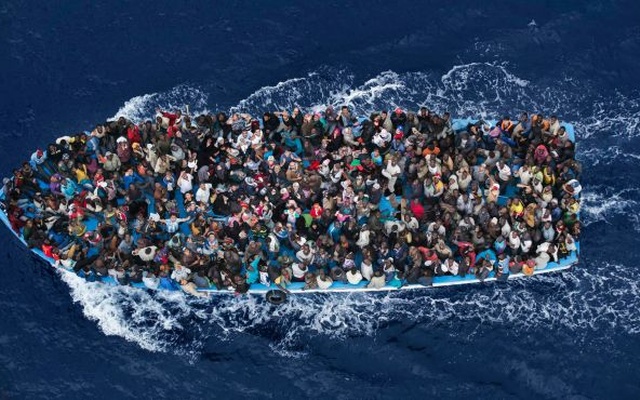Bangladeshis now make up the single largest group of illegal migrants to European shores, reports English daily The Independent.
More than 2,800 Bangladeshis arrived on European shores from North Africa in the first three months of 2017, compared to only one over the same period in 2016, said the report from the London-based newspaper.
The demographics of asylum seekers in Italy has shifted dramatically since the new routes emerged, said The International Organisation for Migration (IOM).
“The thing that’s really changing is the main nationality of the migrants, and the number coming from Bangladesh,” IOM’s Flavio di Giacomo told The Independent.
“By the end of March last year only one Bangladeshi had arrived in Italy – and this year the number is more than 2,831 for the same period.”
Previously, Syrians fleeing the civil war had made up the largest group of boat migrants to Europe.
Some of the Bangladeshi migrants said their trip to Libya was organised by an “agency” that provided them with a working visa for between $3,000 (Tk 255,000) and $4,000 (Tk 340,000).
“From Bangladesh, they first travelled to Dubai and Turkey, and finally reached Libya by plane,” an IOM spokesperson said.
“At the airport, an ‘employer’ met them and took their documents.”
Reuters
Similar practices are often seen in the forced labour used in the Gulf states and Libya, where smugglers detain migrants and extort their loved ones for money, or force them into labour or prostitution.
Some of the Bangladeshis lived in Libya for up to four years, while others were only there for a few months before attempting the journey to Europe, said the report.
With a record of almost 1,100 people drowning, suffocating or dying of hypothermia on overcrowded boats so far this year, the North Africa to Italy crossing is considered the deadliest sea passage in the world.
Human Rights Watch (HRW) Senior Libya Researcher Hanan Salah said Libya had been a destination for Bangladeshi migrants seeking work before the outbreak of the civil war in 2011.
Following the British-backed removal of Muammar Gaddafi, the country has seen countless armed factions, including IS, wage war for territory. The resulting lawlessness has allowed smugglers to work unchecked along the coast.
“Unscrupulous recruitment agents” covered the route from Dubai to Dhaka, said HRW Gulf Researcher Nicholas McGeehan.
“South Asian states are all too happy to get people off their hands if there are remittances going back,” he added. “The scale of corruption of officials being involved in recruitment is huge.”
Bangladeshis working in North Africa or the Gulf often receive worse pay and treatment than migrants from richer countries.
Senior Researcher Dr Gareth Price said Rohingya Muslims from Burma were also fleeing Bangladesh.
Jamaat-e-Islami Islamist party members have also sought asylum abroad, claiming political persecution.
Reuters
Migrants resorting to smugglers would not meet requirements for a legal working visa in Europe, where bank accounts are frequently checked for a minimum amount of funds as a condition of entry, said Price.
A controversial agreement struck between the EU and Turkey last year has reduced comparatively shorter and safer crossings over the Aegean Sea to a trickle, leaving Libya the main launching point for refugee boats.
Italy signed a deal with the fragile Government of National Accord (GNA) in Tripoli in February that promised training, equipment and money to fight smugglers – an agreement initially endorsed by EU states.
But moves to support Libyan detention camps have been criticised by humanitarian groups and the UN, which warned that refugees suffer arbitrary detention, rape and torture, and that pushing them back into a warzone could violate international law.
Source: bdnews24

